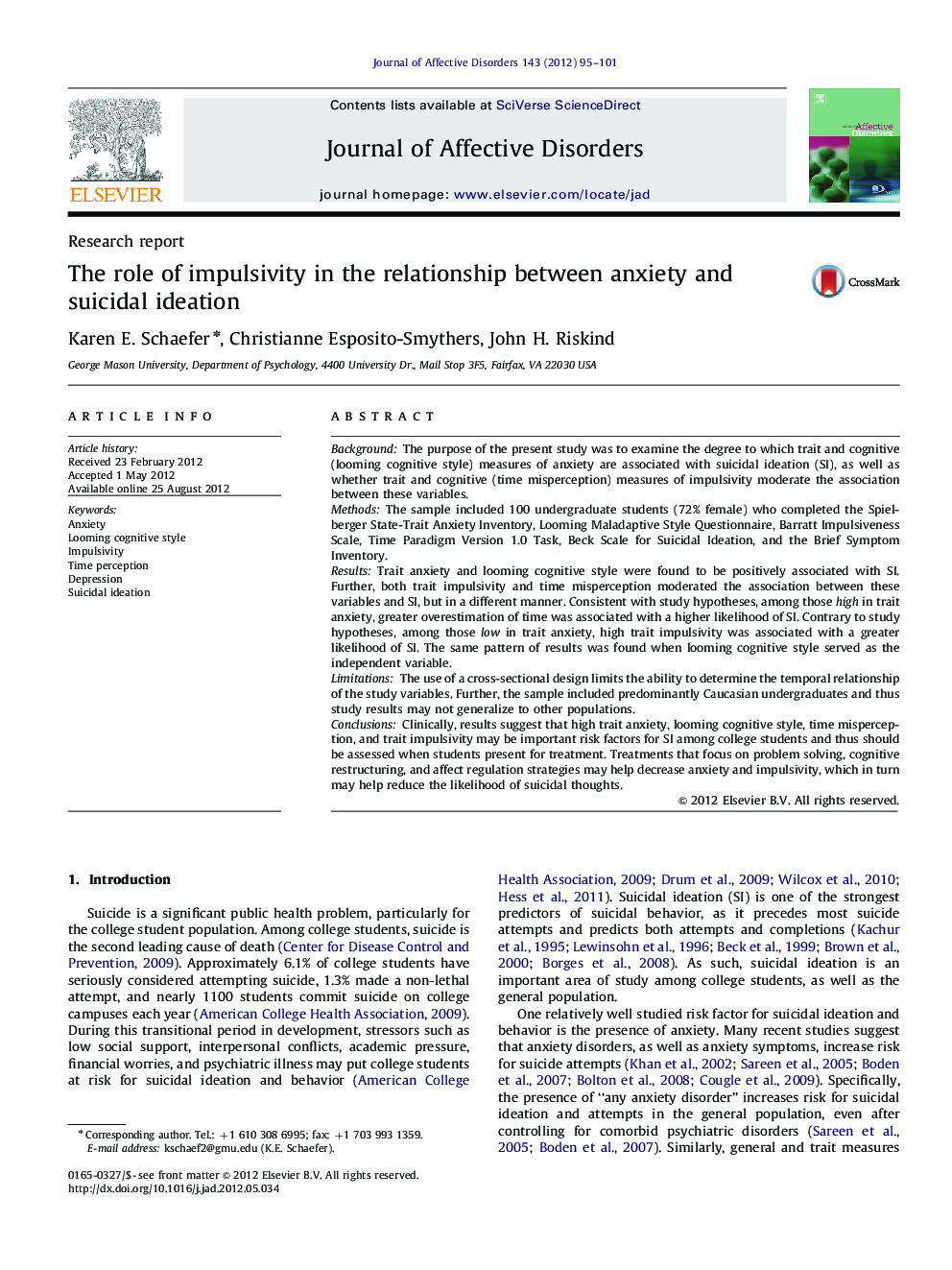| Article ID | Journal | Published Year | Pages | File Type |
|---|---|---|---|---|
| 4186122 | Journal of Affective Disorders | 2012 | 7 Pages |
BackgroundThe purpose of the present study was to examine the degree to which trait and cognitive (looming cognitive style) measures of anxiety are associated with suicidal ideation (SI), as well as whether trait and cognitive (time misperception) measures of impulsivity moderate the association between these variables.MethodsThe sample included 100 undergraduate students (72% female) who completed the Spielberger State-Trait Anxiety Inventory, Looming Maladaptive Style Questionnaire, Barratt Impulsiveness Scale, Time Paradigm Version 1.0 Task, Beck Scale for Suicidal Ideation, and the Brief Symptom Inventory.ResultsTrait anxiety and looming cognitive style were found to be positively associated with SI. Further, both trait impulsivity and time misperception moderated the association between these variables and SI, but in a different manner. Consistent with study hypotheses, among those high in trait anxiety, greater overestimation of time was associated with a higher likelihood of SI. Contrary to study hypotheses, among those low in trait anxiety, high trait impulsivity was associated with a greater likelihood of SI. The same pattern of results was found when looming cognitive style served as the independent variable.LimitationsThe use of a cross-sectional design limits the ability to determine the temporal relationship of the study variables. Further, the sample included predominantly Caucasian undergraduates and thus study results may not generalize to other populations.ConclusionsClinically, results suggest that high trait anxiety, looming cognitive style, time misperception, and trait impulsivity may be important risk factors for SI among college students and thus should be assessed when students present for treatment. Treatments that focus on problem solving, cognitive restructuring, and affect regulation strategies may help decrease anxiety and impulsivity, which in turn may help reduce the likelihood of suicidal thoughts.
